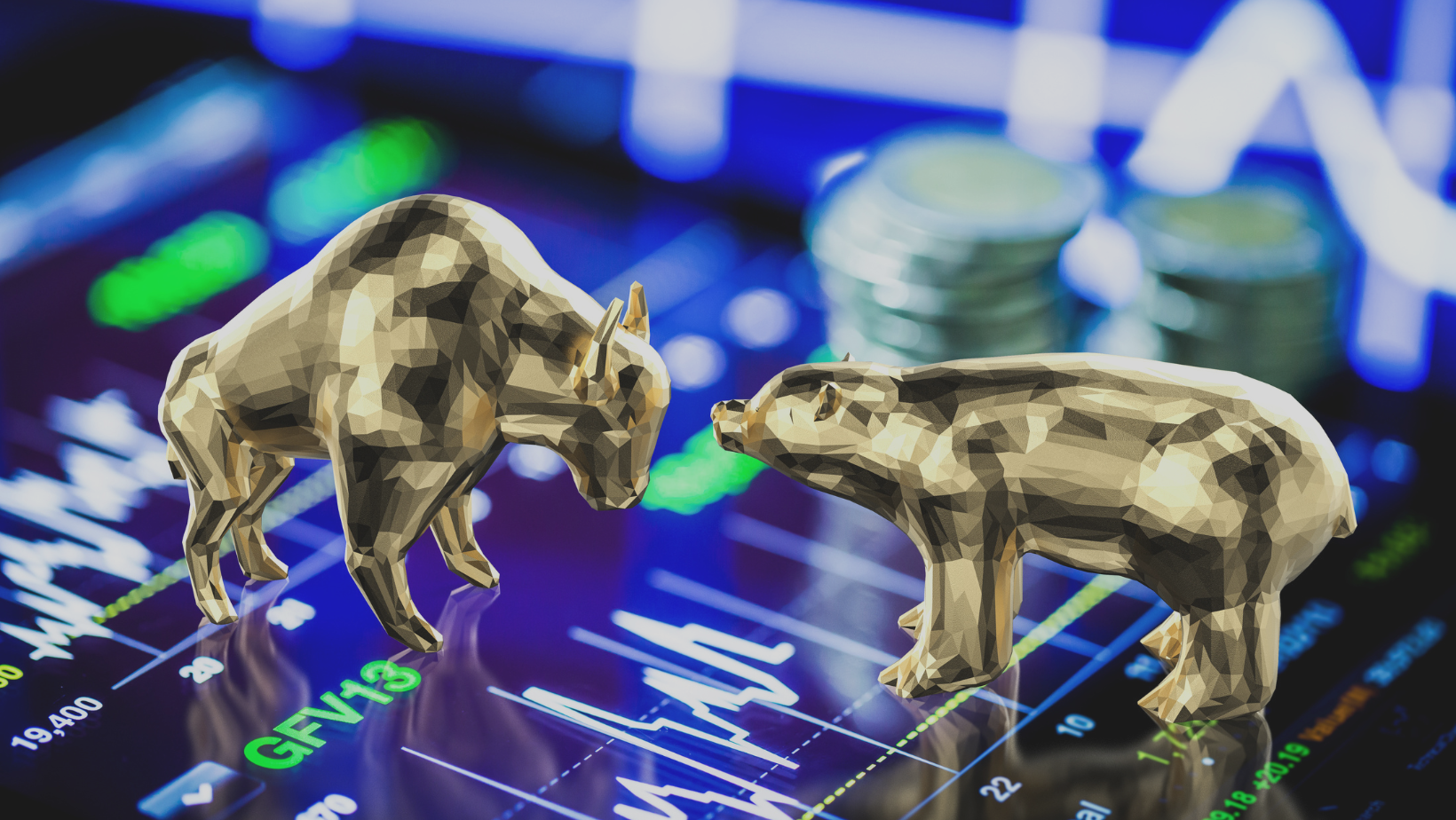
Market & Economic Update: Still Looking for the Bottom
Market & Economic Update: Still Looking for the Bottom
Merriam-Webster’s 2021 word of the year was ‘vaccine’; for 2022, ‘inflation’ has to be in the running as the top choice. Regardless of what is causing the spike in inflation – be it too much stimulus, a 2.5-year fractured supply chain, worker shortages, the war in Ukraine, or a combination thereof – inflation is driving the action on Wall Street and around the world, affecting the pricing of everything: stocks, bonds, energy, real estate, commodities, food, wages, cars, airfare, hotels, etc. Very little is immune from the current high-inflation environment.
The Federal Reserve, colloquially known as the Fed, is tasked with the responsibility of maintaining price stability; yet, it has limited tools to combat inflation with its predominant tool being the control of interest rates. Amid the high-inflation environment, the Fed has been leaning on its one main tool – raising interest rates – to increase borrowing costs to cool demand and reduce pressure on what remains a post-pandemic supply-constrained world.
On September 21, the Fed hiked the federal funds rate – the target interest rate set by the Federal Open Market Committee (FOMC), the policymaking board of the Fed – by 0.75%; its unprecedented third-straight 0.75% uptick in rates, bringing the fed funds rate to 3-3.25%, its highest level since 2008, hitting the brakes on our economy to rein in inflation running much hotter than the Fed’s 2% target. The Fed may not be done yet, as it forecasts another 1% in rate hikes by year-end 2022, which has economists and strategists divided on whether additional hikes are necessary or overkill in an economy that is already feeling the impact from the rate hikes to date.
There are two distinct camps on the future of interest rates. Jay Powell and the Fed and others believe rates need to go higher to control inflation, citing former Fed Chairman Paul Volcker’s battle with high inflation in the 1970s and early 1980s. The opposing camp believes the Fed has already done enough, citing forward-looking indicators that are flashing a substantial slowdown in the economy – enough to lower inflation to a more manageable level closer to its 2% target – while recognizing certain components of inflation such as rents and wages may remain elevated for an extended period due to the housing shortage and strong jobs market.
We at AFS side with the latter, the Fed-opposing camp. Future rate hikes may result in more damage to the economy than inflation running a few points hotter than its target threshold. We also believe the Fed’s focus on increasing unemployment to control wage inflation is a mistake; the Fed needs to accept a period of higher wage inflation as nothing other than a long overdue catch-up adjustment, especially for lower-tier wage earners whose wages have fallen behind inflation for the past decade.
Historically, it takes about 12 months to feel the full effect of a rate hike, and the 3% uptick in hikes over the past six months has the fed funds rate 100% over the 1.5% pre-pandemic rate. If that does not resonate with you, think about this reality in relation to mortgages: 30-year mortgages are pushing 7% today, and they were 3.1% in December 2021. On Wednesday morning, the Mortgage Bankers Association (MBA) reported mortgage applications to purchase a home dropped 37% year-over-year, to the lowest level since 1997. The refinancing volume was 86% lower than it was the same week one year ago.
With higher rates and the Fed’s continued hawkish outlook on inflation, investors are left with volatile markets to navigate. As of the market close on Wednesday, October 5 – despite the strong surge to kick off the final quarter of the year that we saw on Monday– the major market indices remain decisively down from their respective 52-week highs: the S&P 500 is down 21.5%, the Dow Jones Industrial Average (DJIA) is down 18.1%, the Nasdaq is down 31.2%, the Russell 2000 (small caps) is down 28.3%, and the U.S. Aggregate Bond Market (AGG) is down 16.3%.
What are investors looking for when it comes to investing new capital? A sign that the Fed is done hiking rates and has inflation under control. It’s unclear when that will happen, but If history is our guide, the Fed may be forced to – once again – lower rates in response to the economy growing too slowly; budding déjà vu of 2019, the year the Fed admitted it was wrong after raising the fed funds rate to approximately 2.25%, and then preceded to cut rates three times, to 1.5%, upon realizing growth was stalling at the higher rate. On Wednesday, Nobel laureate Paul Krugman warned the Fed risks going too far in fighting inflation. “I don’t think many people appreciate how fast the economy – both labor markets and inflation – may be turning,” Krugman wrote in a twitter thread. In a New York Times column on Tuesday, Krugman predicted that the era of low interest rates will likely return. We agree with that thought and expect that to benefit interest-sensitive asset classes.
One last item to note: Despite the high-inflation economic environment, current market valuations look reasonable on a long-term outlook; however, in the shorter term, the risk of an earnings recession at the hand of continuously high rates has the potential to send the market lower. When and where the current bear market will bottom is anyone’s guess, but there is one truth to keep in mind right now: over the long term, the market always wins. This bear market will harvest a new bull market, and we saw signs of that on the first trading day of this final quarter of 2022. In regards to whether or not one of such rallies will stick: it’s simply a matter of when.
Recent Posts
Blog Archives
- December 2019 (6)
- March 2023 (6)
- November 2019 (5)
- January 2020 (5)
- March 2020 (5)
- September 2020 (5)
- January 2022 (5)
- January 2023 (5)
- August 2020 (4)
- February 2021 (4)
- March 2021 (4)
- April 2021 (4)
- November 2021 (4)
- March 2022 (4)
- April 2022 (4)
- September 2018 (3)
- February 2020 (3)
- May 2020 (3)
- June 2020 (3)
- July 2020 (3)
- October 2020 (3)
- June 2021 (3)
- May 2022 (3)
- June 2022 (3)
- August 2022 (3)
- May 2023 (3)
- June 2023 (3)
- August 2023 (3)
- November 2023 (3)
- April 2024 (3)
- December 2018 (2)
- April 2020 (2)
- November 2020 (2)
- December 2020 (2)
- May 2021 (2)
- August 2021 (2)
- September 2021 (2)
- October 2021 (2)
- February 2022 (2)
- July 2022 (2)
- October 2022 (2)
- November 2022 (2)
- February 2024 (2)
- February 2019 (1)
- March 2019 (1)
- May 2019 (1)
- July 2019 (1)
- August 2019 (1)
- September 2019 (1)
- October 2019 (1)
- January 2021 (1)
- July 2021 (1)
- December 2021 (1)
- September 2022 (1)
- December 2022 (1)
- February 2023 (1)
- April 2023 (1)
- September 2023 (1)
- October 2023 (1)
- December 2023 (1)
- January 2024 (1)
- March 2024 (1)
- May 2024 (1)
- September 2024 (1)
